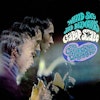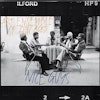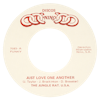Gabor Szabo’s Wind, Sky and Diamonds was an encore to 1967’s Summer of Love. When things in Haight-Ashbury started to cool down again in September, the Hungarian guitarist paid tribute to 1967-defining songs by Eric Burdon and the Animals, Jefferson Airplane, the Beatles, Joan Baez, and the Mamas and the Papas, among others. With a heavy dose of pop-psych and vocals by the California Dreamers, this was an outlier between two of his most-praised records—1967’s The Sorcerer and 1968’s Dreams.
The recordings for Wind, Sky and Diamonds took place from September 12 to 14, the same week as the studio sessions for Light My Fire, a similar album by Impulse producer Bob Thiele and his New Happy Times Orchestra. On Light My Fire, with Szabo as their guest of honor (whose two original songs came from his earlier release Jazz Raga), vocal group the California Dreamers appears only once: on a cover of Bob Dylan’s “Rainy Day Woman” to remind listeners that everybody must get stoned. On Wind, Sky and Diamonds, however, the nine-piece collective gets a center-stage role in every song, while Szabo takes a more humble position with visceral guitar and sitar play.
Half a year earlier, Gabor Szabo’s very own quintet created “magical music”—as fellow guitarist Jimmy Stewart puts it in Wax Poetics Issue 12 (2005)—onstage at Boston’s Jazz Workshop for the live album The Sorcerer. But this time around, right then and there in Western Recorders on Sunset Boulevard, four miles from his new home on Cordell Drive, it was all about surrendering to an autumn breeze after a steamy summer. “An evocation of renewal, of how fresh the wind and the sky can be if you really look at them and feel them,” the late Village Voice jazz critic Nat Hentoff wrote in the album’s liner notes.
All the elements are there to complete a Year of 1967 bingo card. Each covered song was released that year. From “Twelve Thirty” by the Mamas and the Papas to Lulu’s “To Sir with Love,” the theme song of the same-titled 1967 film with actor Sidney Poitier. There’s a 1967 RMI Rock-Si-Chord electric piano, and the era’s peak presence of the sitar in popular music is used throughout the album with the then newly introduced Coral electric sitar. The sitar buzz sound is, of course, also heavily used for their two cheerful covers off Sgt. Pepper’s: “Lucy in the Sky with Diamonds” (which makes up two-thirds of the slightly uninspired album title hybrid Wind, Sky and Diamonds) and “A Day in the Life.”
Two of the songs on the record are all-original compositions, written by the California Dreamers’ Tom Bahler and John Bahler as the Love Generation: “W.C. Fields” and “The End of Life.” Both songs belong to some of the album’s finest moments of soft-psych sunshine pop. That makes up for quite a few unapologetically ’60s-kitsch moments, such as the phonetic singing and drum rolls 101 on “White Rabbit”—a far less dynamic take on Jefferson Airplane’s kaleidoscopic trip than George Benson would play a few years later on his same-titled album on CTI Records. Quite the contrary is the Szabo-penned vocal version of “Are You There?” (an instrumental take, titled “Fox,” shows up on Steve Allen’s 1967 Dunhill release Songs for Gentle People, featuring the guitarist). The version on Wind, Sky and Diamonds sees the group let go of pop sensibilities for a moment to lose themselves in a brief psych-jazz frenzy.
The California Dreamers would be back in the studio with Bob Thiele and engineer Eddie Brackett a week later to record the debut album of a new Impulse signee, a nineteen-year-old saxophonist by the name of Tom Scott. He is also portrayed in the gatefold sleeve of Wind, Sky and Diamonds but noticeably absent in the actual music and credits. For Gabor Szabo, the album was his first official recording on the West Coast. Since then, he almost exclusively recorded and performed on the West Coast—with a few exceptions such as 1973’s Mizrab (CTI) with Bob James at Rudy Van Gelder’s studio in New Jersey, and 1976’s Nightflight (Mercury Records) in Philadelphia’s Sigma Sound Studios.
Winds, Sky and Diamonds opens with a cover of Eric Burdon and the Animals’ “San Franciscan Nights.” In the intro, Szabo invites his old friends from Budapest to San Francisco, after he had to leave his home country in 1956 in the aftermath of the Hungarian Revolution: “The following song is dedicated to the city and the people of San Francisco, who may not know it, but they are beautiful. And so is their city…. Save up all your bread and fly Trans-Love Airways to San Francisco, USA. Then maybe you’ll understand this song. It will be worth it; if not for the sake of this song, but for the sake of your own peace of mind.” It’s as if Szabo recorded the album for those who couldn’t make the transatlantic trip, to feel 1967’s winds of change.



